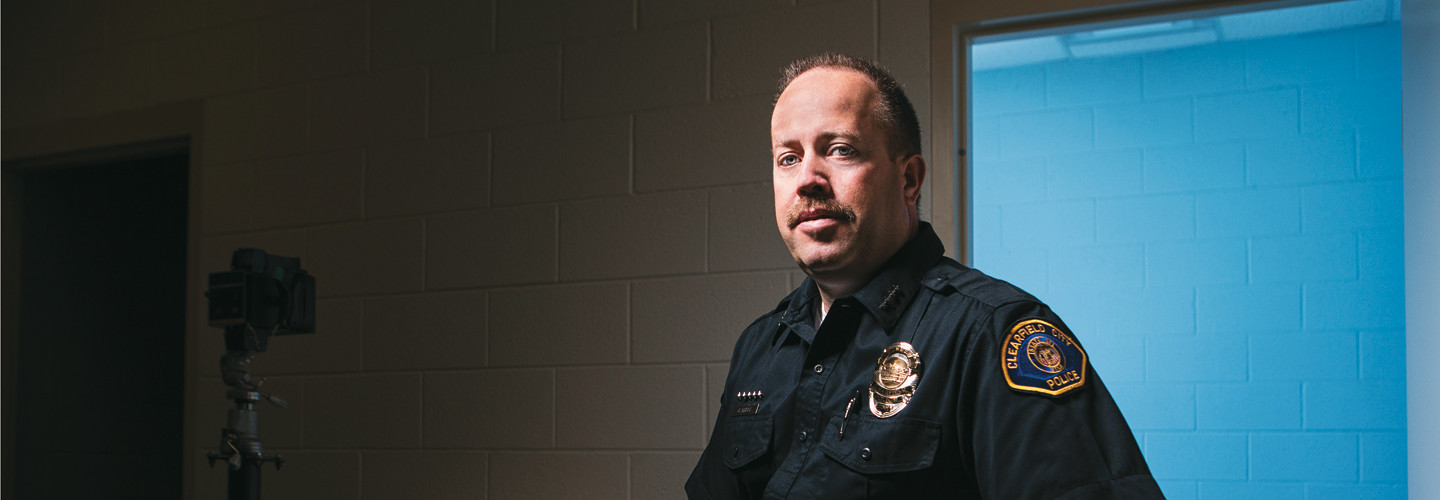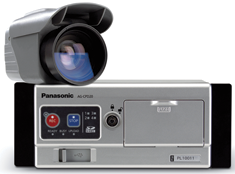Panasonic Video Recording Aids Police Investigations
If a picture is worth a thousand words in today's media-rich, digitally connected world, video must be worth a million.
Just ask Greg Krusi, chief of the Clearfield City Police Department in Utah. He and his IT group replaced three aging, piecemeal video solutions with an integrated system that records video in patrol cars, interview rooms and the courthouse. The Panasonic Toughbook Arbitrator 360 solution gives the city's police officers and public safety personnel quick and easy access to crucial video evidence, increasing their efficiency and providing a live account of details that can make or break a case.
"There's a lot of video being shot today that was not available 10 years ago," says Krusi. "Whether it's being shot from vehicles or smartphones or locked away in storage, our courts, prosecutors and the public now expect video on every case. Having video that shows the circumstances of a crime is more important than someone's recollections."
Say Goodbye to VHS Tapes
The Clearfield City Police Department has long maintained a video record of police stops and interview room exchanges. But the video wasn't reliable, nor was it easy to find relevant clips to support a particular case, explains Mike Stenquist, assistant police chief. Each of the department's vehicles was equipped with dashboard cameras, but there were two video systems — one using VHS tapes and the other using SD memory cards to store the recordings — which made maintenance difficult for the department's two-person IT team. Moreover, both systems lacked search capabilities.
"We had a lot of difficulty maintaining and categorizing video from the police car dash cams on the VHS system," Krusi says. "It took many man hours to search for appropriate video needed for court purposes, which meant downtime for the officer, who was not out on the street working."
Finding the Right Tools for the Job
The video system overhaul began in 2010 when the police department decided to upgrade the two different dash cam systems in vehicles to a common solution. The group chose the Toughbook Arbitrator in part because of its robust search capabilities and because it could automatically upload videos from the vehicle into a centralized server instead of relying on the police officers to physically pull tapes or SD cards from their cars and file them away into physical storage, according to Sean Montierth, Clearfield City's IS director.
The Arbitrator software automatically time-stamps the video, and officers add a case number and classification code, which makes video easily searchable and retrievable, Montierth says. The classification code is also keyed to a retention schedule that specifies how long the video must be stored and automatically purges it when it is no longer needed.
Also on StateTech:
How the Albuquerque Police Department Created a Real Time Crime Center
Expanding the Implementation
Based on Clearfield City's success with the Arbitrator in patrol cars, the police department decided to take the next step and deploy that system in interview rooms. The legacy VHS-based system didn't record consistently, Krusi says, and the process required two detectives — one to conduct the interview and another to watch from an adjacent room and activate the recording. "Our detective staff doesn't have that many people available," Krusi says.
The new system automatically turns on with the lights in the interview room to further simplify and streamline operation.
Once the two legs of the video system were in place, it became a logical next step to add the same video element to the Clearfield City courtroom. The state of Utah had already issued a mandate for all courtrooms to be equipped with audio capabilities, and it was just as easy to put video in at the same time, Krusi explains.
All video footage is now stored and managed on a server that contains 4 terabytes of storage. The Arbitrator software's ability to automatically enforce a retention schedule aids in storage maintenance, but Montierth concedes that the burgeoning demand for video may dictate an investment in additional storage capacity over time. "The price you have to pay with video is to keep up with the scalability of storage," he says. "If our retention schedule changes and we decide to hold data longer, we would immediately have to double the amount of storage."
Other than keeping tabs on storage creep, the department hasn't encountered any obstacles during implementation. Rather, the common platform and the Arbitrator's integrated search capabilities make for a streamlined workflow, freeing up detectives and the IT group to focus on what they do best.
"Instead of spending time dealing with video, we can now spend it doing other things," Krusi says. "Having quick access to video from three locations — the police cars, the interview rooms and the courtroom — means we can follow any case handled in the city or county from the time of offense to the time the case is adjudicated in court. That's the real benefit."








